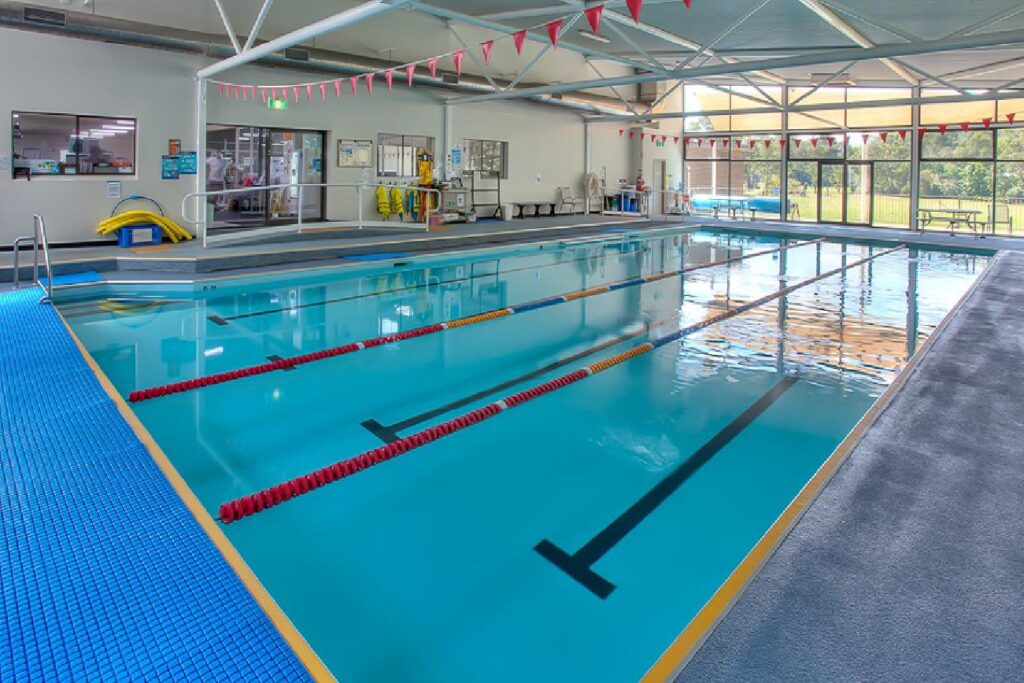Dehumidification units in sports complexes with pools play a critical role in controlling high humidity levels in indoor pool environments, ensuring user comfort, preventing structural damage, and improving energy efficiency. Given the typically intensive use and large pool areas of sports complexes, the design and implementation of these systems require special attention. Below is a detailed overview of the use of dehumidification units in sports complexes with pools:
Importance of Dehumidification Units in Sports Complexes
Water evaporation in indoor pools causes high humidity levels. In sports complexes, this can lead to:
- User Comfort: High humidity creates a heavy and uncomfortable atmosphere for swimmers and athletes.
- Structural Risks: Humidity can cause corrosion, mold, mildew, and material damage in the building structure.
- Health and Hygiene: Moist environments encourage bacteria and mold growth, posing health risks.
- Equipment Protection: Locker room equipment, electronic systems, and other materials can be damaged by moisture.
- Energy Losses: Uncontrolled humidity increases energy consumption of HVAC systems.
Dehumidification units resolve these issues by improving user experience and extending facility longevity.
Working Principle of Dehumidification Units
These units extract humid air from the pool area, condense excess moisture into liquid form, and return dry, conditioned air to the space. Key components include:
- Evaporator: Cools air to condense moisture.
- Condenser: Collects and removes condensed water.
- Compressor: Powers the refrigeration cycle.
- Fans: Circulate air through the system.
- Heat Recovery Unit: Recovers waste heat to warm pool water or ambient air, enhancing energy efficiency.
Usage Features in Sports Complexes
Sports complex pools are often Olympic or semi-Olympic size with high user density. Therefore, dehumidification units should focus on:
- Handling High Moisture Loads: Large pool surface areas and heavy usage cause high evaporation rates that must be effectively managed.
- Capacity and Scalability: Systems should be sized according to pool size, user numbers, and local climate. Centralized systems are common in large complexes.
- Energy Efficiency: Heat recovery units reduce energy costs by using recovered heat to warm water or air.
- Air Circulation: Powerful fans and ductwork ensure even air distribution over large spaces.
- Noise Control: Low-noise models improve user comfort by minimizing sound disturbance.
Advantages
Using dehumidification units in sports complexes with pools offers:
- Comfortable Environment: Maintains humidity between 50-60%, creating a pleasant space for athletes and visitors.
- Structural Protection: Prevents mold, corrosion, and material damage, reducing maintenance costs.
- Health and Hygiene: Controls moisture to reduce bacteria and mold growth, ensuring sanitary conditions.
- Energy Savings: Heat recovery reduces energy expenses for pool and air heating.
- Versatility: Provides dehumidification, ventilation, and heating functions tailored to complex needs.
System Selection and Installation
Key factors for selecting a system include:
- Pool Characteristics: Surface area, water temperature, and evaporation rate define capacity needs.
- User Density: Peak usage increases moisture load and demands more robust systems.
- Climate Conditions: External temperature and humidity influence system design.
- Integration: Units should integrate seamlessly with existing HVAC systems.
- Installation Location: Typically installed near pools but away from users (e.g., technical rooms), with ducts strategically placed for uniform airflow.
Maintenance and Operation
Efficient operation requires regular maintenance:
- Filter Cleaning: Regular cleaning or replacement of air filters is necessary.
- Drainage Checks: Condensate drainage must be kept clear to prevent blockages.
- Sensor Calibration: Humidity and temperature sensors require periodic calibration.
- Periodic Maintenance: Annual servicing of compressors, fans, and other components extends system life and prevents faults.
Example Applications
- Olympic Pools: Large pools used for professional swimming events require high-capacity dehumidification systems.
- Community Sports Centers: Municipal or university sports complexes use cost-effective yet efficient units.
- Private Gyms: Smaller pools in fitness centers often utilize compact, quiet dehumidification units.
Dehumidification units in sports complexes with pools effectively control high humidity levels, enhancing user comfort, protecting structural integrity, and optimizing energy use. Selecting the right capacity, professional installation, and regular maintenance are critical investments for long-term savings and user satisfaction.
Keywords
sports complex with pool, pool dehumidification unit, indoor pool humidity control, gym ventilation, dehumidification systems, heat recovery HVAC, sports complex indoor air quality, indoor pool ventilation solutions, use of dehumidifiers, pool area climate control
